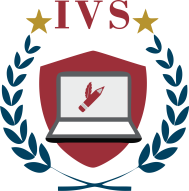In today’s rapidly evolving educational landscape, teacher dashboards have become indispensable tools. These comprehensive platforms support educators by simplifying complex administrative tasks, enhancing communication, and fostering more effective classroom management. By integrating technology seamlessly into daily operations, teacher dashboards empower educators to focus more on teaching and less on administrative burdens, thereby significantly enhancing the learning environment for students.
Teacher dashboards serve as a crucial nerve center for educational activities, providing teachers with immediate access to essential tools and information. This access enables educators to manage classroom activities more efficiently, track student progress in real time, and customize learning experiences to meet diverse student needs. The result is a more organized, engaging, and responsive educational experience that benefits teachers, students, and administrators alike.
II. Core Features of an Effective Teacher Dashboard
A. Management Tools
Class & Student Information
An effective teacher dashboard offers streamlined access to a wealth of student information, including contact details, schedules, and academic records. This feature simplifies the management of daily tasks, from taking attendance to monitoring homework submissions, allowing teachers to maintain an organized and proactive classroom environment.
Communication Tools
Secure and efficient communication channels are fundamental components of any teacher dashboard. These tools facilitate direct communication with students, parents, and colleagues through messages, announcements, and updates, ensuring that everyone involved in the educational process stays well-informed and engaged.
Gradebook & Progress Tracking
A well-designed gradebook and progress tracking system are vital for visualizing student performance across various assessments. This feature not only helps teachers monitor academic progress but also provides valuable insights that can guide instructional decisions and interventions.
Calendar & Planning
Integration with school calendars and personal scheduling tools makes it easier for teachers to plan lessons and manage their time effectively. This synchronization ensures that all educational activities are well-coordinated and that deadlines are met consistently.
Resource Management
Efficient organization and sharing of teaching materials, assignments, and rubrics are essential for any educational setting. A teacher dashboard that offers robust resource management capabilities helps educators maintain an organized repository of educational content, accessible anytime and from anywhere.
B. Assessment Tools
Automated Grading & Feedback
Tools for automated grading of quizzes and exams save valuable time and reduce the administrative burden on teachers. These systems often include options for personalized feedback, allowing educators to provide tailored responses to students’ work, enhancing the learning experience.
Data Analysis & Visualization
Effective dashboards include data analysis features that present student performance in actionable formats, such as charts and graphs. This visualization aids teachers in identifying trends and areas needing attention, facilitating more informed teaching strategies.
Customized Assessments
The ability to create and manage formative and summative assessments that align with specific learning objectives is another key feature. This flexibility allows teachers to adapt assessments based on the curriculum and the unique dynamics of their classroom.
Standards Tracking
Monitoring student progress towards specific educational standards is crucial. An effective dashboard provides tools that track these advancements, helping ensure that all students meet the required benchmarks.
C. Workflow Builders
Differentiation Tools
Features that allow teachers to personalize learning experiences according to individual student needs and abilities are essential for inclusive education. These tools help cater to a diverse student population, each with unique learning styles and paces.
Collaboration Tools
Facilitating collaboration among students and between teachers and students is vital for a dynamic learning environment. Tools such as discussion boards and shared documents promote cooperative learning and help develop critical social skills.
Goal Setting & Tracking
Collaborative tools for setting educational goals and monitoring progress are integral to student development. These features encourage students to take ownership of their learning and help teachers provide targeted support.
Report Generation
The ability to generate reports easily is crucial for communicating student progress to parents and administrators. An effective teacher dashboard automates this process, providing comprehensive and customizable reports that reflect educational achievements and areas for improvement.
III. Additional Considerations
Accessibility
It’s important that teacher dashboards are accessible to users with disabilities, ensuring that all teachers and students can engage fully with the platform’s features.
Security & Privacy
Robust data encryption and user access controls are critical to protect sensitive student information and maintain privacy.
Customization
Allowing teachers to personalize their dashboard interface and functionalities according to their preferences can greatly enhance usability and satisfaction.
Mobile-friendliness
With the increasing use of mobile devices, it is crucial that teacher dashboards are responsive and accessible on smartphones and tablets, enabling teachers to manage their responsibilities on the go.
IV. Conclusion
Effective teacher dashboards are transformative tools in education, offering features that streamline management, enhance communication, and personalize learning. By effectively utilizing these dashboards, educators can significantly improve student learning outcomes and operational efficiency. Iqra Virtual School is committed to integrating these advanced features into our teaching
